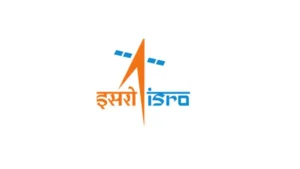The recent outbreak of Marburg virus in Rwanda has raised significant alarm, marking the first reported cases in the country. As of late September 2024, health officials confirmed 26 cases, including 12 fatalities, with over 80% of infections occurring among healthcare workers. The Marburg virus is one of the deadliest pathogens known, causing severe hemorrhagic fever with a case fatality rate ranging from 24% to 88%. Given Rwanda’s limited healthcare resources, this outbreak poses a substantial threat to the country’s already fragile health system.
Understanding Marburg Virus Disease (MVD)
Marburg virus disease (MVD) is a highly infectious illness caused by the Marburg virus, a member of the Filoviridae family, which includes the Ebola virus. Initial infections typically stem from contact with Rousettus bats, but human-to-human transmission can occur through direct contact with infected bodily fluids or contaminated surfaces. Symptoms usually appear 2 to 21 days after infection, beginning with fever, severe headaches, and muscle aches, often progressing to severe hemorrhagic symptoms.
Epidemiological Concerns
The Ministry of Health reported the confirmation of MVD in patients primarily from health facilities in Kigali. Contact tracing efforts are ongoing, with approximately 300 individuals being monitored. The outbreak is particularly concerning due to the high percentage of healthcare workers affected, raising the risk of further spread within the healthcare system and to the general population.
Public Health Response
The Rwandan government, in coordination with the World Health Organization (WHO), is implementing measures to combat the outbreak. These include early case detection, isolation of suspected cases, and enhancing infection prevention protocols in healthcare facilities. As a precaution, Rwanda is receiving experimental vaccines and treatments, including 700 doses of a candidate vaccine for healthcare workers. The WHO assesses the outbreak risk as very high at the national level, emphasizing the need for heightened surveillance and public awareness to reduce transmission.
Looking Ahead
The emergence of Marburg virus in Rwanda not only poses immediate health challenges but also underscores the need for stronger public health infrastructure in the region. With historical outbreaks of MVD reported in neighboring countries, regional collaboration and preparedness are crucial to prevent further spread and protect vulnerable populations. The situation continues to evolve, and further investigations are necessary to understand the full scope of the outbreak and implement effective control measures.
Current Situation
Since September 27, 2024, the Ministry of Health in Rwanda has reported multiple MVD cases across several provinces, predominantly affecting health facilities.
CDC’s Response
The CDC, which established an office in Rwanda in 2002, is deploying scientists to assist with the outbreak investigation. They will focus on contact tracing, laboratory testing, and infection prevention. The CDC is also providing guidance to healthcare providers and the public while collaborating with local and international partners to enhance disease monitoring and response capabilities.
Key Points on Marburg Virus Outbreak in Rwanda
| Aspect | Details |
|---|---|
| Why in News | Rwanda confirmed its first Marburg virus outbreak in late September 2024, with 26 cases and 12 fatalities. Healthcare workers represent over 80% of infections, putting strain on the health system. |
| Disease | Marburg Virus Disease (MVD) is caused by the Marburg virus from the Filoviridae family, with symptoms like fever, headaches, muscle pain, and severe hemorrhagic fever, similar to Ebola. |
| Transmission | – Primary source: Contact with Rousettus bats. |
| – Human-to-human: Spread through bodily fluids or contaminated surfaces. Incubation: 2-21 days. | |
| Epidemiological Data | – Location: Mainly health facilities in Kigali. |
| – Contact Tracing: Monitoring about 300 individuals potentially exposed. | |
| Healthcare Impact | Over 80% of infections are among healthcare workers, severely impacting Rwanda’s health infrastructure. |
| Response Measures | – Government and WHO are focusing on early detection, isolation, and preventive steps. |
| – 700 doses of a candidate vaccine provided for healthcare worker protection. | |
| CDC Involvement | – CDC, operational in Rwanda since 2002, is assisting with outbreak investigation and prevention efforts. |
| – Focuses on contact tracing, lab testing, and infection control. | |
| Risk Assessment | WHO assesses a very high national risk, emphasizing surveillance and public awareness. |
| Future Considerations | Highlights the need for strong health infrastructure and regional cooperation to manage virus spread. |




 ISRO Launches RESPOND Basket 2025, Calls...
ISRO Launches RESPOND Basket 2025, Calls...
 LVM3-M6 Rocket Set to Launch on December...
LVM3-M6 Rocket Set to Launch on December...
 Michaela Benthaus to Make History as Fir...
Michaela Benthaus to Make History as Fir...







